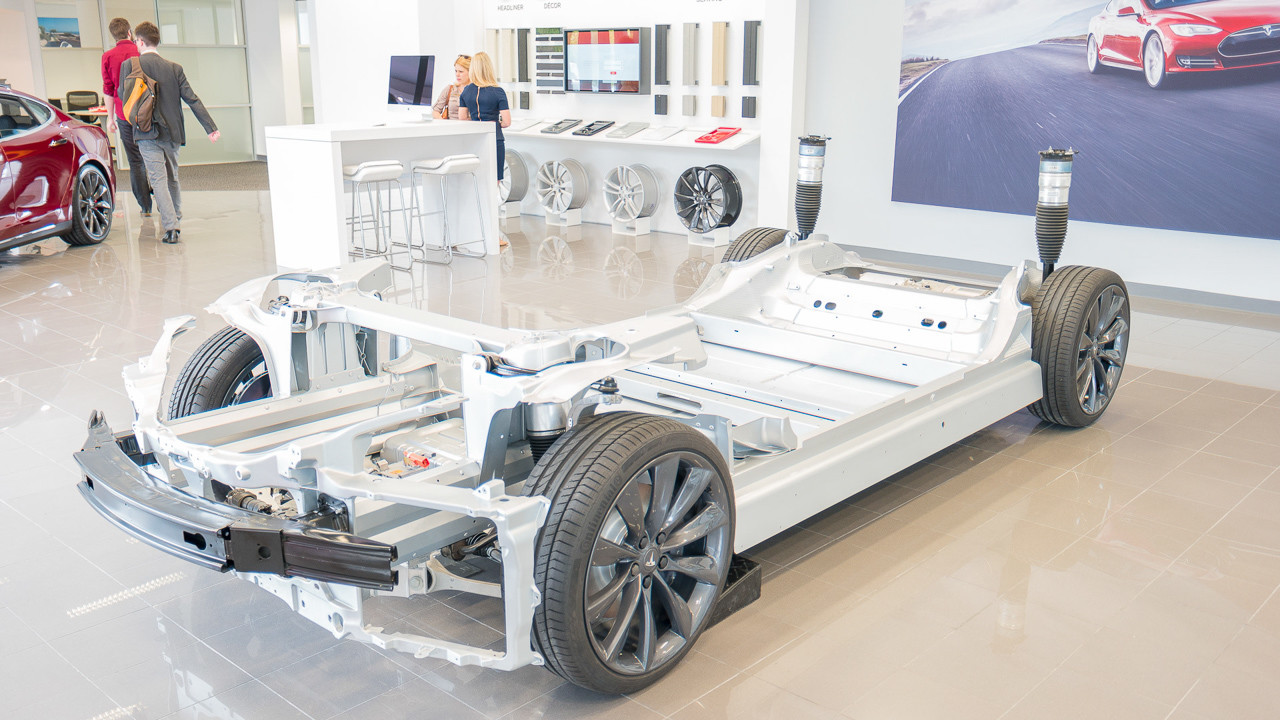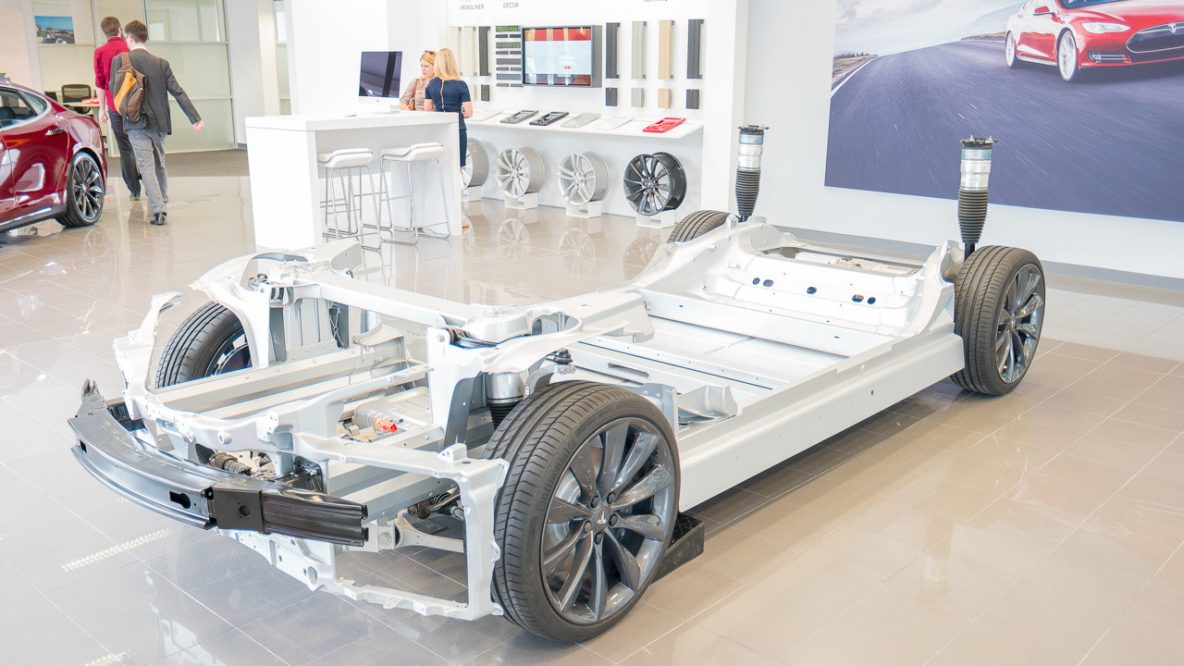

Tesla chassis, including motor and power plant: The reduction in the number of parts for the electric car dramatically increases the profitability
Tesla blew through car production expectations this quarter – it had made just over 25,000 vehicles by 31 March – putting it on track to make 500,000 cars by 2018, according to the major shareholder, Elon Musk. The stock price is up 28% since the beginning of 2017, as the market digests the possibility that this target is achievable.
It’s a fact that America’s newest car maker made 83922 cars last year, and remember, that is from zero in 2013.
But it’s the longer term – so five years – that investors should be focusing on: the company is probably aiming for a number close to 1m cars by 2020 or shortly thereafter.
The shorts will scream about this, saying the company will miss these numbers – and that is probably the case – but it won’t be by much in number terms, or by long in terms of time.
Tesla’s production number comes just one week after Chinese internet giant Tencent bought 5% of the company, injecting over $1b in its working capital in order to help hit those targets.
We are not Elon Musk fanboys – he makes his fair share of mistakes, chief among them being taking on too much, such as the merger with residential battery company Solar City.
Tesla is already now valued at US$46.4b (note: same as Ford, a bit less than either GM and BMW). But if Tesla does hit a 1m cars a year by 2020 the market capitalisation numbers become compelling.
Even at the 2018 target of 500k cars, Tesla is on track for sales of $25b. It is legitimate to ask whether the market is ready to accept that if the company gets to 1m cars it will generate sales of $50b annually. The stock price says it has not been. But that is what is happening.
Here is where the per unit economics of the Tesla really start to add up. The 2016 annual Tesla filing reveals that gross margin (ie sale price less cost of the component in the car) was 26%. This is a number most car companies would drool over, given their gross margins hover between the 10%-20% mark.
Part of the reason fossil fuel car companies traditionally have lower gross margins is the huge number of stock keeping units (SKU’s) needed to support the various models.
Of course, there are systems that are common to both technologies, like brakes and steering. But the internal combustion engine (or ICE) is really just a maze of mechanical bits that control the explosive chemical energy created by burning petrol. Carburettors, catalytic crackers, turbos, pumps and the like are part of the complex supply chain that makes up the final product.
But the electric car does away with literally 99% of the moving parts found in the ICE. What does removing most of the componentry in a car look like in financial terms? The answer is between 6c and 16c in the dollar or additional earnings.
And remember that the Tesla gross margin is struck on sales considerably below that will be achieved as it gets the economies of scale which are the hallmark of car companies. It is conceivable that the company’s gross margin could be in the order of 30%+. The current SGA – selling, general and administrative including the research spend (all the expense that comes below the actual cost of the raw materials in the cars) will grow proportionately smaller as a percentage of sales. This is the very definition of operating leverage.
These economics would certainly have informed Tencent ’s investment decision. And having a holding in Tesla at a time when the Chinese government, and its people, are so focused on a pathway to cleaner air makes good business sense. Tencent, with its 800m monthly active users, is essentially saying it will smooth the path to sales of the cars in China, which is not trivial – just ask Apple, which struggled for so long to have its iphone accepted for sale.
For the record, Tesla’s sales in China tripled last year to more than $1 billion, or 15 percent of its annual $7 billion in revenue. Tencent is also an investor in China ride sharer Didi Chuxing, which merged with Uber China last year,
The Tesla and Uber business plans both have autonomous driving capability in them, and that is a significant undertaking, but they are very different business models.
From the Uber (and Tencent) perspective removing the driver changes the model, since at present the driver also brings a fully financed car. Without the driver, Uber is in the fleet ownership business, about which we have written before. This almost makes Uber ultimately look more like Hertz or even an airline company, the major assets of which are in transport. Tesla is foremost a car company which envisages being owned by the driver (whether auto-pilot is engaged or not), at least in the next five years.
Share this Post


